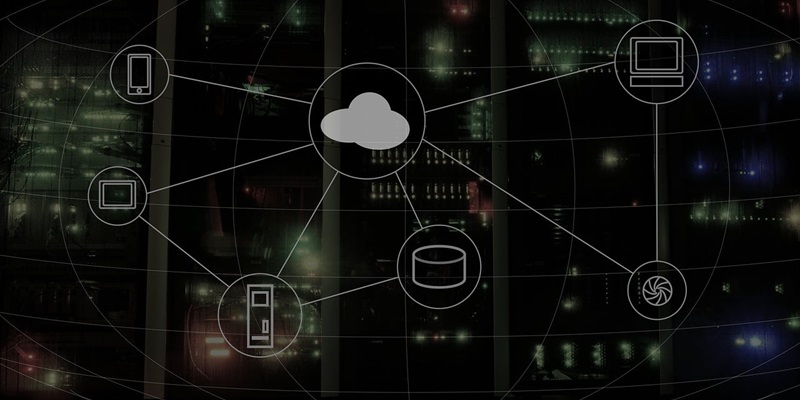In the era of digital transformation, businesses are increasingly relying on cloud computing to store and process their data. While this shift brings numerous benefits, it also introduces new challenges in terms of internet security and compliance. Cloud monitoring has emerged as a crucial practice to address these challenges. In this article, we will delve into the concept of cloud monitoring, its significance in continuously monitoring cloud-based systems, and its role in safeguarding sensitive information, detecting potential threats, and ensuring compliance with industry regulations.
Definition of Cloud Monitoring
Cloud monitoring refers to the practice of continuously monitoring and analyzing cloud-based systems, networks, and applications to detect and mitigate potential security threats. It involves collecting and analyzing data from various sources, such as log files, network traffic, and system metrics, to identify any suspicious activities or vulnerabilities. By closely monitoring the cloud environment, businesses can effectively identify and respond to potential security breaches, minimizing the impact of cyberattacks.
Data Collection and Analysis
The foundation of cloud monitoring lies in the collection and analysis of data. Cloud monitoring solutions gather data from various sources, including log files, network traffic, and system metrics. This comprehensive approach ensures that no potential security threat goes unnoticed. Analyzing this data helps identify suspicious activities and vulnerabilities, enabling organizations to take proactive measures to address them.
Security Breach Detection and Response
By monitoring network traffic and system logs in real-time, businesses can quickly identify and respond to potential security breaches. This proactive approach allows organizations to mitigate the impact of cyberattacks before they cause significant damage. Timely detection and response are crucial in minimizing data loss, protecting sensitive information, and maintaining business continuity.
Compliance Monitoring
Compliance with industry regulations and data protection laws is a top priority for organizations across various sectors. Cloud monitoring plays a vital role in ensuring regulatory compliance by proactively detecting and addressing any violations. By continuously monitoring the cloud environment, organizations can identify potential compliance risks and take necessary steps to mitigate them. This helps in avoiding penalties, legal consequences, and reputational damage associated with compliance breaches.
Real-time Visibility
Cloud monitoring provides real-time visibility into an organization’s cloud infrastructure. It enables businesses to have a holistic view of their cloud-based systems, networks, and applications. Real-time visibility allows for quick detection and response to security breaches, reducing the time it takes to identify and mitigate potential threats. This proactive approach enhances the overall security posture of an organization.
Benefits of Cloud Monitoring
Cloud monitoring offers several benefits that directly contribute to the security and compliance of an organization. Firstly, it enhances security measures by continuously monitoring and analyzing cloud-based systems. This proactive approach allows organizations to identify vulnerabilities and implement necessary security controls to maintain data integrity and confidentiality. Secondly, cloud monitoring enables proactive threat detection by analyzing data from various sources. By identifying suspicious activities and potential threats in real-time, businesses can take immediate action to mitigate the risks. Thirdly, cloud monitoring ensures regulatory compliance by proactively detecting and addressing any compliance violations. Organizations can align their cloud infrastructure with industry regulations and data protection laws, reducing the risk of penalties and legal consequences. Lastly, cloud monitoring minimizes the impact of cyberattacks by enabling organizations to detect and respond to security breaches quickly. This reduces data loss, downtime, and reputational damage associated with cyber incidents.
Challenges in the Cloud Computing Era
The increasing reliance on cloud computing brings forth new challenges in terms of internet security and compliance. Organizations are often faced with the complexities of securing their cloud-based systems and ensuring compliance with ever-evolving regulations. Data breaches and compliance violations can have significant consequences, including financial losses and damaged reputation. Businesses need to understand the importance of cloud monitoring and adopt proactive measures to protect their sensitive information.
Use of Cloud Monitoring Solutions
Organizations are turning to cloud monitoring solutions to safeguard their sensitive information and ensure regulatory compliance. These solutions offer comprehensive monitoring capabilities, including log file analysis, network traffic monitoring, and real-time alerts. Cloud monitoring solutions integrate with existing cloud platforms, allowing for seamless monitoring and protection of data. By leveraging these solutions, businesses can enhance their security posture and reduce the risk of data breaches and compliance failures.
Proactive Safeguarding of Sensitive Information
Embracing cloud monitoring is a proactive step towards safeguarding sensitive information in the digital realm. As cyber threats continue to evolve, organizations cannot rely solely on reactive measures. They must take proactive steps to detect potential threats and secure their cloud-based systems. Cloud monitoring provides the visibility and insights needed to identify vulnerabilities, implement necessary security controls, and mitigate risks effectively.
In the digital age, cloud monitoring has become an indispensable practice for organizations seeking to protect their data, detect potential threats, and ensure compliance with industry regulations. By continuously monitoring and analyzing cloud-based systems, networks, and applications, businesses can strengthen their security measures, proactively detect threats, and maintain regulatory compliance. Embracing cloud monitoring is a proactive approach to safeguarding sensitive information in the ever-changing cyber landscape. It is a crucial step towards effective data protection, threat detection, and assurance of compliance in the digital realm.

